Compared to last week, western Canadian feeder cattle prices traded $2-$3 on either side of unchanged. Alberta packers were buying fed cattle on a dressed basis at $275 delivered; the Alberta fed market has rallied $10-$12 over the past couple weeks. Secondly, U.S. feeder cattle prices have also rallied US$10-US$12 during the same time frame […] Read more
Tag Archives jerry klassen — page 17

Klassen: Feeder market stabilizes
Cow-calf producers selling sooner than normal
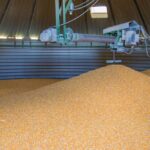
Record yields for Ontario row crops
Soybean and corn yields surpass pre-harvest StatsCan estimates
Ontario corn and soybean harvests are in the final stages. Harvest reports confirm record yields for row crops. Weather was more co-operative in early November, resulting in significant harvest progress. Basis levels are under pressure as the commercial pipeline is considered full. Exports for corn and soybeans have improved in recent weeks. Farmers have been […] Read more
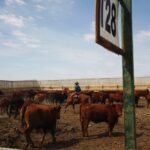
Klassen: Feeder market making seasonal lows
Surge of Canadian cattle exports expected
Compared to last week, western Canadian feeder markets were down $2-$4 on average. Prices for feeder cattle in the eastern Prairie regions were relatively unchanged from seven days earlier; however, values in Alberta and western Saskatchewan were down $4 to as much as $8 in some cases. This variation made the market hard to define. […] Read more

Klassen: Fed cattle prices down on the week
Compared to last week, Western Canadian feeder cattle prices were down $4 to $6 on average. Sub quality feeders traded as much as $8 below week ago levels. The market was hard to define with wide price ranges on similar weight feeders within a short distance. Southern Alberta is contending with adverse pen conditions as […] Read more
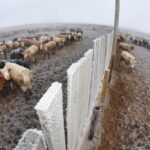
Klassen: Feeder market continues downward slide
Prairies' snowstorm leads to risk discount
Compared to last week, western Canadian yearling prices were steady to $2 lower; calves traded $2-$4 below week-ago levels. Saskatchewan and Manitoba experienced their first major snowstorm of the season last week. The market tends to incorporate a risk discount for adverse weather as buyers factor in higher death loss. Also, major feedlot operators believe […] Read more
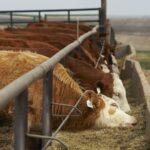
Klassen: Feeder market on soft slope
Compared to last week, western Canadian yearling prices were steady to $2 lower on average while calves traded steady to as much as $4 lower in certain regions; calves under 550 pounds were quoted $3-$6 below week-ago levels. Barley and wheat prices continue to percolate higher, causing a defensive sentiment amongst buyers. Southern Alberta and […] Read more
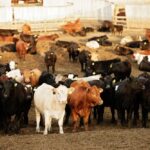
Klassen: Feeder cattle market continues on downward trend
Compared to last week, Western Canadian yearling markets dropped $2 to $4 while calf prices sank $2 to as much as $6 on average. Rising feed grain prices set a negative tone. Adverse weather also contributed to lower bids, especially in the lighter weight categories. Most auction barns had feature calf sales this past week. […] Read more
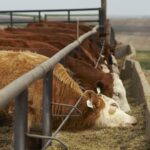
Klassen: Feeder cattle market grinds lower
Compared to last week, western Canadian yearling markets were down $2-$5 while calves dropped by $3 to as much as $8. We’re now seeing some medium-quality calves weighing around 550 lbs. sell under the psychological $200 level in central Alberta. The market is lacking demand. Feedlot inventories are running 33 per cent above the five-year […] Read more

Klassen: Demand for feeder cattle eases
Compared to last week, western Canadian yearling prices were down $3-$5; calves traded $2-$6 below week-ago levels. The market has come under pressure for three main reasons. Cattle on feed inventories in Alberta and Saskatchewan are 36 per cent above the five-year average. Many feedlots are comfortable with ownership levels. The drought caused about 150,000 […] Read more
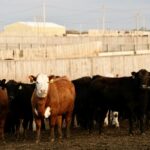
Klassen: Feeder market continues consolidation
U.S. corn northbound into Prairies
Compared to last week, western Canadian yearling prices were relatively unchanged while calf markets were down $2-$3 on average. Feedlot inventories in Alberta and Saskatchewan are 30 per cent above the five-year average; therefore, demand is lacking moving into the main marketing period for calves. Finishing feedlots have sufficient ownership and being fairly finicky on […] Read more


